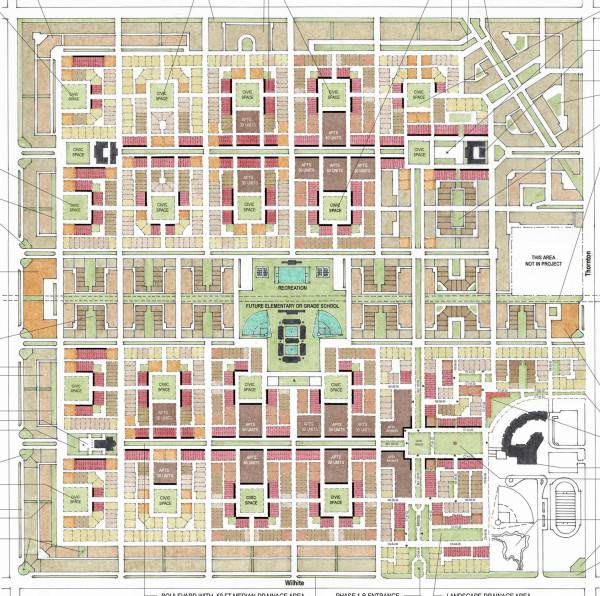Now We’re Talking
Those of us in the Form-Based Codes world too easily forget how obscure our work must seem to those unfamiliar with what we do. And yet, if the practice of form-based coding and related reform of land development regulations is to catch on and succeed, we have to communicate our work intelligibly and show how it relates to everyday life.
We all value living in thriving healthy communities. That is what FBCs intend to create, verypurposely and by design. How many people know that? For that matter, how many people have ever even heard of form-based codes? And if they did stumble across the terms we use, wouldn’t they just glaze over and move on to something they find more interesting?

Saddlewood in Clovis, New Mexico, takes inspiration from Savannah, Georgia. Plan courtesy of Vialta Group, LLC, A Gateway Planning Company
Yet think about it. Our work relates directly to all of the biggest challenges of our time: climate change, reduction of greenhouse gases, environmental resilience, economic development in economically depressed areas, job creation, providing affordable housing, social justice, the creation of lively public spaces, walkability, reduction of obesity … the list goes on.
How many people make the connection between these larger concerns and the intentional design and development of walkable places and an engaging public realm? And even if they can make that leap, can they see that our dysfunctional zoning codes are a major obstacle to achieving the desired results? And that new tools of land development regulation are a major part of the solution?
We confront a major communication challenge. We have to jump out of our technocratic “geek” world and talk about what we do in terms that most people can understand, especially young people who want to live in walkable urban places. Not that we should stop improving the state of the art of form-based coding. We need to continue to refine the professional work we do.
But even more importantly, we need to get the word out so that people understand it. Otherwise our wonderful innovations in coding will go unnoticed and never be implemented. Miami passed a city-wide form-based code by calling it “Miami 21-Your City, Your Plan.” Cincinnati passed an innovative form-based code by calling it “Plan Build Live Cincinnati.” Talk to people in Cincinnati and it’s amazing how many of them know what a form-based code is.
Now we’re talking – and people are listening. Let’s keep the geek talk among ourselves, but bring some “real talk” out into the world. It’s ready, waiting, and willing to act on our ideas.















Thank you for your words. In my hometown form-based codes are being considered by City Council right now and there is substantial pushback based on the precedent of long-term residents (who are often low-income, non-white) being pushed out of their homes, buildings, and even out of the city – due to more demand for shelter than exists at the moment. I wonder, is there inherent relationship between FBCs and what many are calling “gentrification,” or the (not so) subtle pushing out of individuals and families from their homes? In the name of business, “development,” and progress, this seems painfully common, yet is the practice of FBCs unique from other zoning with respect to issues of affordable and adequate housing? I have many friends and know quit a few elders who stand to lose their homes and communities and would like to contribute feedback to City Council during this period of community input being solicited and considered before deliberation. Any insight you are able to share re: FBCs and respect of current/long-term residents, adequate housing more generally is very welcomed and appreciated. Have a good day!